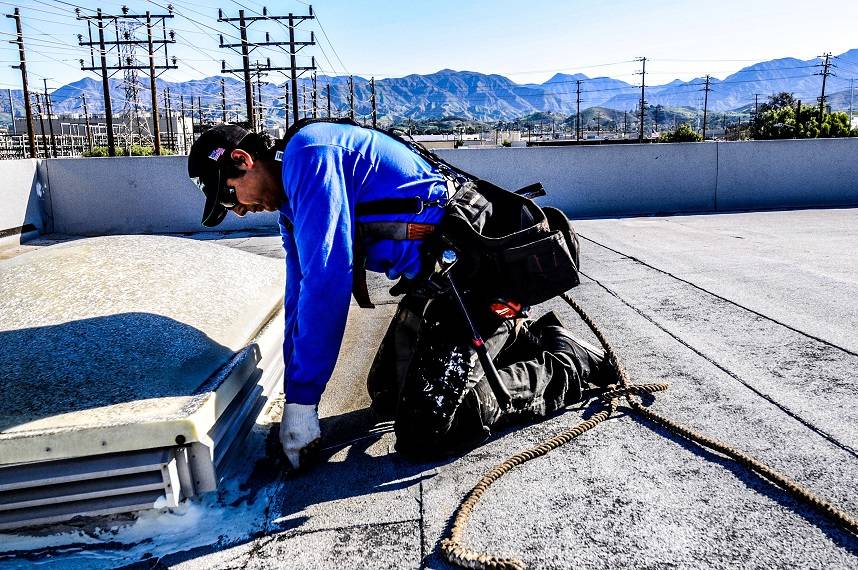Schedule Free Estimate
The 3 Most Common Leak Areas Commercial Roofing Companies in Los Angeles See
Roof leaks are one of the most frequent and costly issues faced by commercial property owners. In Los Angeles while we are blessed with great weather for the most part, commercial roofs still take a beating from all the weather elements. Even the best roofing systems can develop vulnerabilities. Identifying the source of a leak in a commercial roof can be challenging, as the visible damage inside the building often doesn’t align with the actual problem area on the roof. In this article, we’ll explore the most common sources for leaks in commercial roofing, helping you understand where and why leaks occur so you can take preventative steps to protect your building.
1. Damaged or Worn Flashing:
Flashing, which is used to seal the joints between the roof and other structures (like vents, chimneys, or skylights), can deteriorate or become damaged over time, leading to leaks. Poor installation can also contribute to flashing issues.
2. Ponding Water:
Flat roofs are prone to ponding, where water accumulates in low spots or areas that don’t drain properly. If water sits too long, it can eventually seep through the roofing material, causing leaks.
3. Commercial Roofing Membrane Damage:
The roof membrane (such as modified bitumen or TPO) can develop cracks, punctures, or blisters due to wear and tear, foot traffic, or exposure to the elements, which can allow water to penetrate the roof.
Conclusion
Understanding the most common sources of leaks in commercial roofing is crucial for maintaining the integrity of your building. Whether it’s damaged flashing, ponding water, or a compromised roof membrane, early detection and proper maintenance can prevent small issues from turning into costly repairs. Regular roof inspections and prompt attention to potential problem areas will help extend the life of your roof and protect your property from the dangers of water damage. By staying proactive, you can ensure that your commercial roof continues to provide the protection your business needs for years to come.
Central Roofing Company Headquarters
555 W. 182nd Street
Gardena, CA 90248
310-527-6770

Get A Quote
One of our roofing estimators will gladly meet you to discuss your options and follow up with a free, no-obligation, written estimate.
At Central Roofing Company, we understand that a sturdy and reliable roof is crucial for the success and safety of your commercial property. Our team of highly skilled and trained roofing professionals is committed to delivering exceptional craftsmanship and superior service in every project we undertake.
555 W. 182nd St. Gardena, CA 90248
Ph: 310-527-6770
Our Office Locations:
Our Services
CA license #684960 – Central Roofing, 2024 ©All Rights Reserved | Terms of Use | Privacy Policy | Built by Dymic